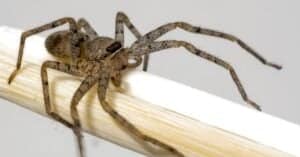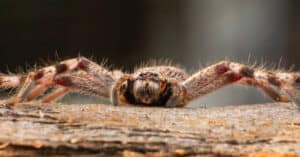Tennessee is a gorgeous place with abundant ways to get in touch with nature. Between the Great Smoky Mountains, the various lakes and rivers for fishing, and national parks, there’s always a way for people to experience the outdoors. Being outside brings people into contact with all sorts of animals in Tennessee, spiders included. While most of them are small, some spiders are quite large. Today, we’re going to examine the biggest spiders in Tennessee and show you what they’re all about. Get ready to learn about some of the big arachnids that live all around you!
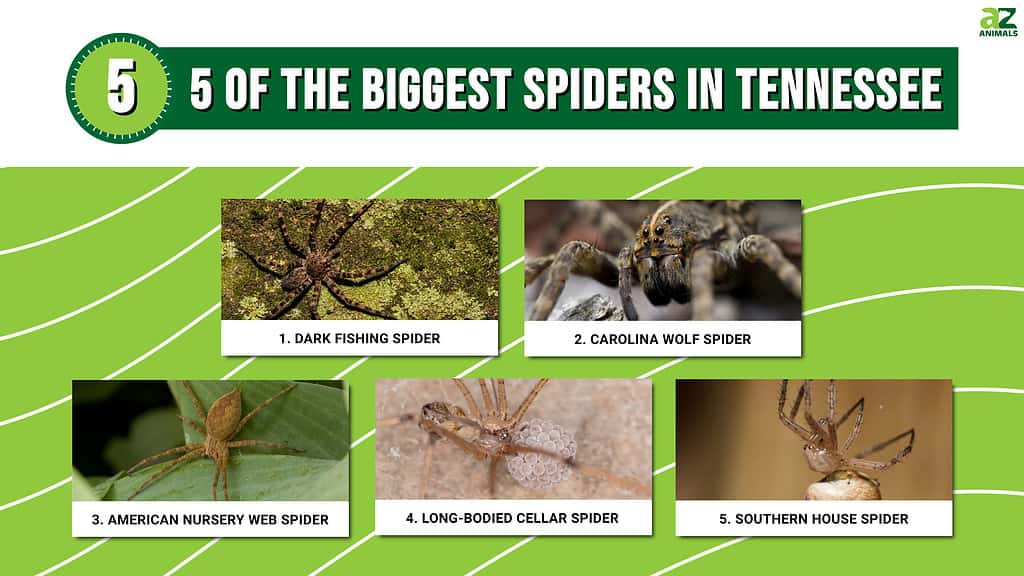
What Are the Biggest Spiders in Tennessee?
Some big spiders live in Tennessee, but none of them compare in size to the largest tarantulas. Instead, you’ll find that most of the biggest spiders in Tennessee only measure 3 inches or fewer.
We’ll pick five of the most sizable species, only one species per genus, and show you where they can be found, how big they get, and whether or not their bites are dangerous to people. Without further ado, let’s get started!
5. Southern House Spider
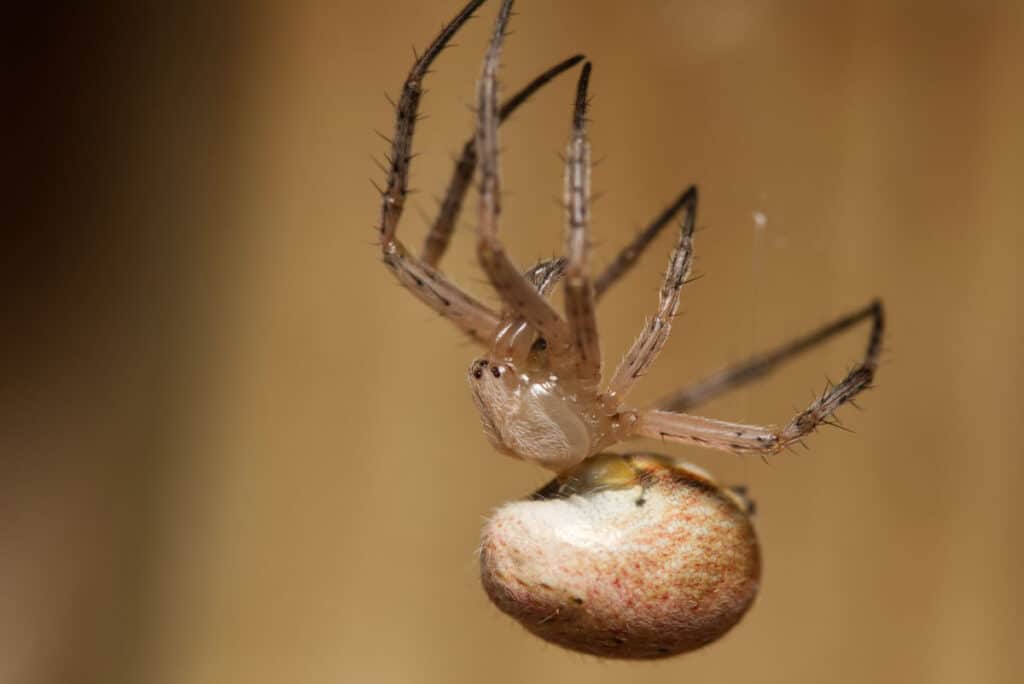
Southern house spiders often get mistaken for brown recluses.
©Kala Stuwe/Shutterstock.com
| Scientific Name | Size | Danger to Humans |
|---|---|---|
| Kukulcania hibernalis | 0.75-2 inches | Their bites can cause minor pain that diminishes over a day or two in rare cases. |
The southern house spider is often met with hostility by humans, and with good reason. It tends to find its way into homes and bears a passing resemblance to the brown recluse spider.
These spiders are not that dangerous on their own, though. Their bites can cause some minor pain, but it usually subsides quickly or lingers for a day or two in the worst cases.
Southern house spiders are brown and have a violin-shaped mark that acts as a source of confusion between them and the recluse. These spiders often stuff themselves into cracks and crevices in human-occupied buildings where they can make webs to trap and kill their prey. All in all, they are not very dangerous, but you should avoid handling them. The last thing you want is to misidentify a brown recluse.
4. Long-Bodied Cellar Spider
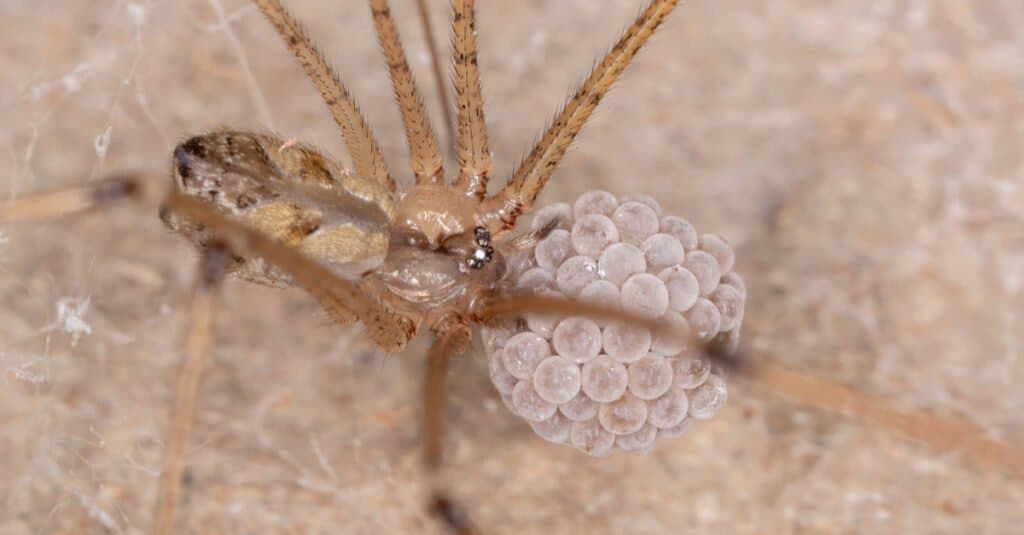
Cellar spiders have semi-translucent bodies.
©iStock.com/ViniSouza128
| Scientific Name | Size | Danger to Humans |
|---|---|---|
| Pholcus phalangioides | 1-2 inches | A bite may cause a mild, short-lived burning sensation. |
The long-bodied cellar spider has a roughly peanut-shaped body and interesting colorations. The spider is usually a brownish-gray or light brown color, and it has a somewhat translucent body. That combined with the spider’s long legs and habit of vibrating its webs when threatened, makes it a rather unsettling sight.
Although they may look strange, the spider isn’t going to harm you. Although some people buy into the urban legend that these are deadly spiders, their bites will mostly cause some mild pain and a burning sensation. Even that is rare because these spiders are not aggressive and don’t want to instigate a fight.
You’ll mostly find them in your basements, attics, and garages, out of the way of human foot traffic, where they can hunt in peace.
3. American Nursery Web Spider
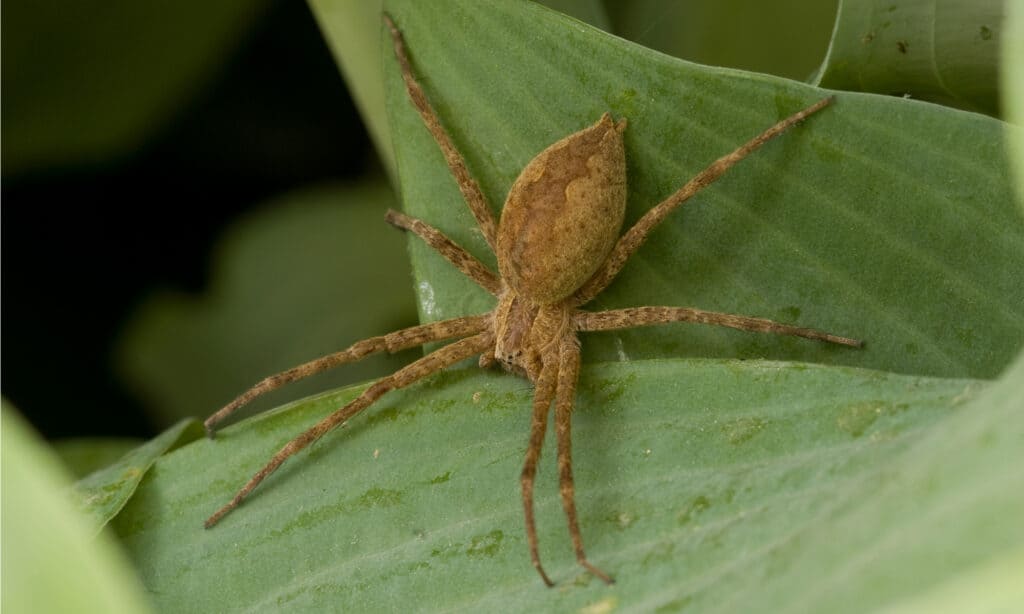
Nursery web spiders ambush and hunt their prey.
©SDeming/Shutterstock.com
| Scientific Name | Size | Danger to Humans |
|---|---|---|
| Pisaurina mira | 1-3 inches | Delivers a bite that is mostly harmless to humans, with pain and swelling common. |
The American nursery web spider is famous for its poor treatment of its mates. Specifically, the females try to eat the males after they have mated. They are also well-known for the loving care that they take of their hatchlings. They build them a webby nursery and then watch over them as they grow.
These spiders are often found in plants near homes, including trees, bushes, shrubs, and long grass. They are wandering hunters that try to find their prey and attack them rather than waiting on their webs to do the work for them.
Typically, American nursery web spiders are brown or reddish-brown, and they have a darker brown pattern running down their backs. This pattern is usually bordered by light colors, like white. They do not bite humans often and don’t pose much of a threat if they do deliver a bite.
Most people experience swelling and mild pain if they are bitten by this species, but that’s about it.
2. Carolina Wolf Spider

Carolina wolf spiders are large arachnids that deliver a painful bite.
©Will E. Davis/Shutterstock.com
| Scientific Name | Size | Danger to Humans |
|---|---|---|
| Hogna carolinensis | 2-4 inches | The bite from this spider causes local pain and swelling. |
The Carolina wolf spider is one of the biggest spiders in Tennessee, and it’s also the biggest type of wolf spider in the U.S. This monstrous spider’s legspan can measure up to 4 inches with a body that measures about an inch and a half.
These spiders are dark brown or black with mottled patterns on their abdomens. Their cephalothorax is often dark, with a light stripe running down the center starting behind the eyes and a light edge. Male Carolina wolf spiders may have orange on their abdomen, but that is not always the case.
These spiders carry their hatchlings on their backs, making them appear even larger and making some people mistake them for tarantulas. However, their bite is not all that harmful. They are reluctant to bite, and a bite will cause moderate local pain and swelling.
People with allergies to spider venom can experience nausea, headaches, and other more severe symptoms that require medical aid.
1. Dark Fishing Spider

The dark fishing spider is unusual in that it is often found on trees.
©iStock.com/JasonOndreicka
| Scientific Name | Size | Danger to Humans |
|---|---|---|
| Dolomedes tenebrosus | 3.5-4.5 inches | Their bite will inflict pain and swelling similar to a bee sting. |
The dark fishing spider is the biggest spider in Tennessee, edging out the wolf spider by half an inch. This spider is interesting because it’s not always found near water, spending a lot of its time in wooded areas.
Dark fishing spiders have a mottled brown and black body with W-shaped dark patterns bordered by white on their dorsal abdomen. They have legs with black chevrons on their femurs that turn into black and brown banding on their tibias. Although these spiders are large, they don’t harm people that much.
They rarely want to interact with a human being and will flee at the sight of them. However, if you handle this spider, it may defensively react by delivering a bite that is about as painful as a bee sting.
The dark fishing spider is the largest one in the state, but it’s not that dangerous. However, Tennessee does have some dangerous spiders. You need to watch out for the black widow and brown recluse in particular, but even false widows and yellow sac spiders can be dangerous to people. Keep an eye out for these creatures and make sure to leave them alone rather than trying to handle them so you both stay safe.
Summary of the 5 Biggest Spiders in Tennessee
| Rank | Spider | Size |
|---|---|---|
| 1 | Dark Fishing Spider | 3.5-4.5 inches |
| 2 | Carolina Wolf Spider | 2-4 inches |
| 3 | American Nursery Web Spider | 1-3 inches |
| 4 | Long-Bodied Cellar Spider | 1-2 inches |
| 5 | Southern House Spider | .75-2 inches |
The photo featured at the top of this post is © iStock.com/JasonOndreicka
Sources
- University of Wisconsin / Accessed August 27, 2022
- University of Wisconsin (1970) uwm.edu/field-station/nursery-web-spider/ / Accessed August 27, 2022
- Web MD (1970) webmd.com/a-to-z-guides/what-you-need-to-know-about-a-wolf-spider-bite#:~:text=Wolf spiders don't pose,it shouldn't last long / Accessed August 27, 2022
- Missouri Department of Conservation / Accessed August 27, 2022
Thank you for reading! Have some feedback for us? Contact the AZ Animals editorial team.





